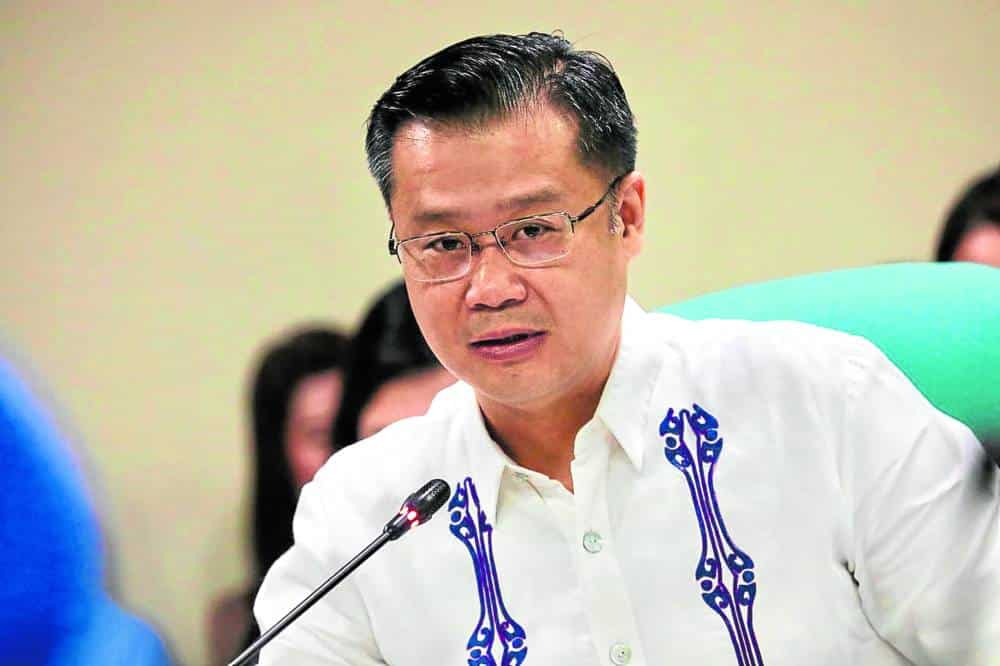
Sen. Sherwin Gatchalian —Senate Social Media Unit
MANILA, Philippines — Sen. Sherwin Gatchalian on Sunday vowed to scrutinize during budget deliberations the subsidy being asked by Philippine Health Insurance Corp. (PhilHealth) to ensure that it would truthfully utilize its funds to support the needs of Filipinos.
He noted that this year, the government provided P61 billion in subsidies to PhilHealth to expand the number of its indirect beneficiaries, “but PhilHealth failed to do it.”
For 2025, PhilHealth is asking for an additional P70 billion in subsidy despite its apparent failure to fully utilize the funds.
“That would be one of my questions. If they can’t spend the money, why do we have to provide subsidy again in 2025? We know they have a problem in implementing and spending money. That’s why I want to pay attention to that. These subsidies were given to expand the number of PhilHealth members but this is not being done by PhilHealth,” Gatchalian said in a radio interview.
READ: Watchdogs question PhilHealth fund transfer
“Maybe it’s too much? We don’t know. Sometimes these agencies keep on asking for money but they don’t look at the so-called absorptive capacity. Can they spend it or is the money they were asking for already too much?” he asked.
Careful examination
“So we should really look into the details and carefully examine their request this coming 2025. But I agree, that this should be carefully examined and if it is not necessary let’s not provide it and just put it to other projects instead,” Gatchalian said.
Several groups and individuals led by Sen. Aquilino Pimentel III earlier filed a petition at the Supreme Court against the diversion of P89.9 billion excess PhilHealth funds to the unprogrammed appropriations in the national budget.
The Department of Finance, which issued Department Circular No. 003-2024 directing PhilHealth and other government-owned and -controlled corporations to remit their unutilized subsidies from 2021 to 2023 to the national treasury to fund the government’s unprogrammed appropriations, defended its directive, asserting it was acting within the authority granted by Congress.
It also reassured the public that reclaiming the “idle funds” would not hinder the state insurer’s capacity to deliver services.
Finance Secretary Ralph Recto maintained that even if PhilHealth transferred P90 billion, it would still be awash in cash of about P546 billion and stay afloat for three more years at least.
Counterintuitive
PhilHealth already gave P20 billion back to the general fund on May 10. Three more transfers are set: P10 billion on Aug. 21, P30 billion on Oct. 16, and P30 billion on May 26, 2025.
“They were given P61 billion and they did not use it. Now the P89 billion will be taken out from the agency, but in 2025 they’re asking for P70 billion … I think that’s counterintuitive. They are not consistent,” Gatchalian said.
“That’s why we have to scrutinize this. I personally will look into this in the upcoming budget hearings. We will have a lot of questions because of these issues,” he added.
Agri party list Rep. Wilbert Lee, meanwhile, urged PhilHealth to implement another round of a 30-percent increase across almost all of its benefit packages.
Lee filed House Resolution No. 1900, which seeks to determine how PhilHealth can expeditiously increase the current benefits and introduce new benefits packages such as the inclusion of vital diagnostic tests such as positron emission tomography scans, computed tomography scans, magnetic resonance imaging, and other essential laboratory exams as outpatient services.
“Despite several conflicting positions and proposals of several stakeholders and government institutions on how to utilize the said excess funds, it is best for the interest of the beneficiaries and contributors of the program to increase all benefit packages and coverage of PhilHealth to ultimately lower the out-of-pocket costs of Filipinos for their health-care needs and maximize the health benefits of PhilHealth,” the resolution read.
PhilHealth, in February this year, implemented a 30-percent increase in the benefits package in almost all of its more than 9,000 case rates, which is the first across-the-board hike in benefits since 2013.